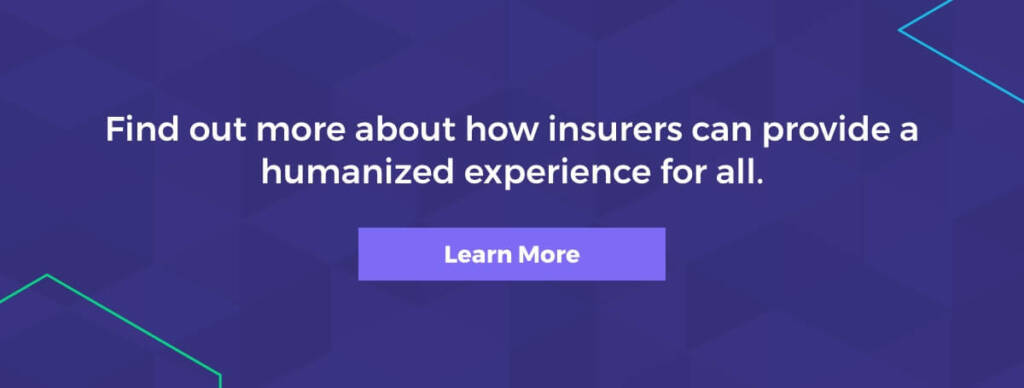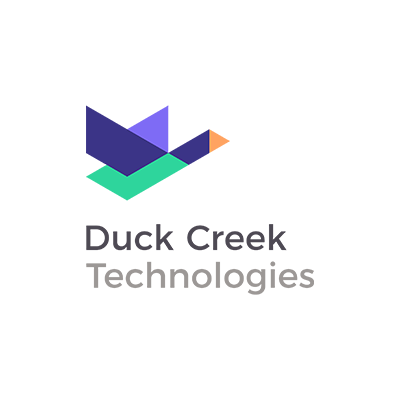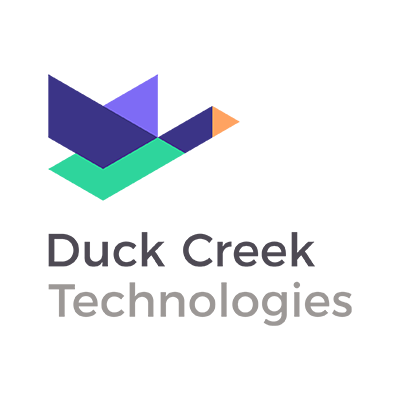Humanized Insurance Is as Varied as Humanity
In previous blogs, we have established what we mean when we talk about humanized insurance. Jess Keeney discussed that the core of humanized insurance is protecting people. Customer experiences within the insurance process are empathetic to both the insured and the professional, leading to connected engagements and ultimately trust between the insured and the provider. Next, Luis Amadeo and Nick Lien pointed out how the industry is transforming to efficiently provide the best protection for people and businesses and how Duck Creek is on a journey and mission to enable carriers to provide a humanized experience. Duck Creek’s low-code technology and cloud-based SaaS solutions are the basis for enabling humanized experiences. The four pillars of our strategy to enable insurers on this journey are a comprehensive suite, people-centric experiences, evergreen SaaS, and intelligent solutions.
In order to support humanized insurance, we must understand some key facets of humanity. All humans are the same, yet all humans are distinctly different. For example, every human needs food and water, shelter, and some type of mobility, and humans desire social belonging, safety, purpose, etc. Yet what food, what social group, and what shelter are unique from human to human. To serve humanity, understanding common needs has great value and scale, yet each human is unique and may have distinct needs and situations at the point of interaction.
See Also: Download our workbook to learn how to create humanized insurance experiences for your customers.
If You Know One Insurance Carrier, You Know One.
This cute saying has been tossed around in the insurance automation arena for years and speaks to the juxtaposition of all insurance carriers being the same, yet distinctly different. They all have the same purpose to provide trust that the insurance provider will be there first to prevent and second to restore when the perils of life interrupt our human existence. But insurance providers are all distinct in the perils they insure, the financial arrangements for the insurance they offer, and the details on how they market, sell, and process.
Insurance providers have similar processes and may be insuring the same types of risks, yet each insurance provider also goes to market with very distinct details of the product they offer and have disparate processes. The similarity comes from the basics that there are many shared attributes of an insurance policy, a bill, or a claim, and many insurers are operating in the same regulatory environment and regions. The distinction comes from the vast array of insured objects and regions; the line of business has distinctions. The items being insured from line to line will be unique. And each carrier, even if providing the same line of business as others, will have very distinct rates, rules, forms, and internal processes for a given line of business.
Another driver of distinction within the insurance process is market differentiation. There are many processes that can be standard and common across insurance providers, yet every insurance provider has a unique offering in some aspect. Almost always, the premium price is unique, and there is some aspect of processing and service that an insurance provider will declare as their differentiation in the market. For the processes and features that are not their differentiation, they desire an out-of-the-box, prebuilt solution. For market differentiation and core business propositions, the insurance provider desires the assurance and ability to extend, configure, or define the uniqueness of the solution being provided to enable their business value.
What Makes an Insurance Automation Solution Exceptional?
This dichotomy is what makes successful insurance automation solutions such a delicate dance. It drives how Duck Creek considers solutions to bring to the market with opinionated pre-built offerings driving exceptional humanized experiences yet embracing the need to differentiate by customer. Every insurance provider wants to buy what is considered standard, yet also wants to be able to manage the distinctions that differentiate them in the market. Compounding the complexity is that an implementation can be delivered to market quickly but will have ongoing updates as insurers continuously iterate on it based on market feedback. Insurance products and regulations are constantly changing, from internal actuarial and underwriting adjustments to external regulations and laws, causing insurance products to be in constant flux.
This is a conundrum for solution providers. Packaged software can provide the necessary pre-built solution. But since the area of distinction can be almost any part of the insurance process or offering, where and how the distinctions are applied and managed within the solution varies from implementation to implementation.
See also: Insurers worldwide are humanizing the insurance experience with Duck Creek.
How Duck Creek Resolves the Content Conundrum
Duck Creek solves this need with a low-code capability. The data and logic are called ‘content’ since it is metadata loaded into the platform and engines to execute the customer’s business logic. The best analogy is Microsoft® Excel® and spreadsheets. Excel is a fantastic tool with immense capability, but by itself, it does nothing for the business user. The business logic and real value is in the spreadsheet. Without a spreadsheet, Excel is just a blank page with a bunch of empty cells on it. A spreadsheet is the content that drives a business solution in Excel.
In the same way, Duck Creek is a content-driven solution. Instead of spreadsheets, Duck Creek provides no-code business logic as content in ManuScripts and other metadata. The Duck Creek Platform is the software/service that understands and executes the content. The combination of the platform’s capabilities instructed by the content provide the business solutions.
The Solution = Platform + Content
Content provides the business logic specific to each implementation and is the primary asset needed for a customer to go live. Some content can be prebuilt and provided as a base for a solution, used as delivered, or slightly modified/extended to meet the customer’s needs. Some other content will be extensively customer-specific to reflect distinct business rules, logic, and algorithms that differentiate the customer in the market.
The use and customer variation of the content may depend on where it is used. Content is used for generic/system purposes and LOB-specific purposes. One example is content used across policies; for example, the content that defines the business rules for Policy transactions in general will seldom be modified. But some content is specific to a LOB and region, such as Personal Auto for Missouri. There may also be content distinct to a LOB within FNOL (first notice of loss) flows for the LOB/policy type on which a claim is being filed.
Each insurance provider desires to buy ready-to-run content and not have to spend time implementing what is perceived as standard behaviors and logic. Insurance providers desire to use existing capabilities that allow them to participate in the best experiences for the insureds and the insurance professional.
Each insurance provider wants a simple yet flexible way to create or override the content to manage the distinct offering they are taking to market.
The Conundrum
And hence the conundrum of insurance automation for a software provider. Software is a ‘write-once-use-many’ model. You write a piece of logic with an understanding of the feature requirements, test it once, then sell it to many customers. This works for a homogenous set of functional requirements. But when each customer needs varied and significant functional changes and custom logic, you are no longer in a pure ‘write-once-use-many’ model, and the content model is at play.
Duck Creek (and the insurance provider) all want a single, tested, out-of-the-box solution used by each implementation. As stated earlier, the customer needs to buy a ready-to-run solution and does not want to implement features, especially when ‘everyone does it the same way’ and Duck Creek has provided exceptional pre-built experiences. Duck Creek would love all customers to use the provided/tested logic delivered out-of-the-box for solutions; this simplifies support and operations. Duck Creek’s Ready-to-Run initiative is targeted to this desire, to provide an exceptional humanized experience for insureds and the insurance professional through pre-built content providing the foundation for the insurer’s business. Ready-to-Run will target distinct lines of business and the humanized experience and uses, starting with personal lines.
But the insurance industry is not homogenous; each carrier has a significant amount of logic, rules, and algorithms that are unique and require customer-specific business logic. This means, like Excel®, Duck Creek needs to provide the ‘ability to.’ The ability to override base logic and the ability to create and build any business logic needed to support their LOB strategy. By extending the out-of-the-box, humanized, ready-to-run content or using the extensive capabilities for custom UI/UX, API, connectors, rules, and all areas of content-driven logic to build custom solutions, insurers can fine-tune the humanized experience specific to their business offerings.
As stated in the previous blog, Duck Creek is investing in a comprehensive suite, people-centric experiences, and intelligent decisions. Get in touch with us to learn more about how P&C insurers are creating a humanized insurance with Duck Creek.







